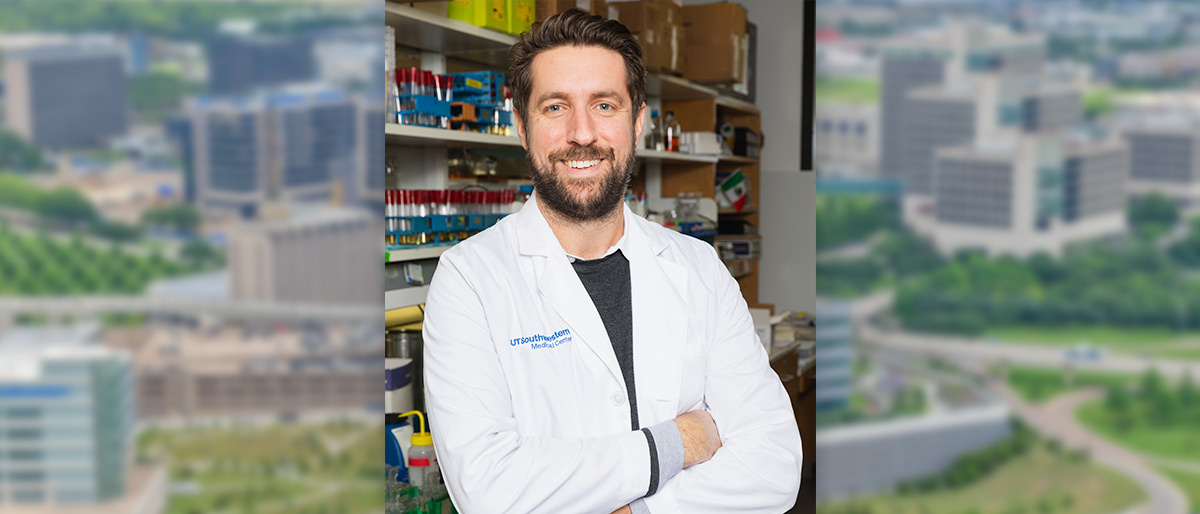UT Southwestern builds on its kinase research breakthroughs with new findings

UT Southwestern Medical Center continues its groundbreaking research into protein kinases with findings published in Molecular Cell that give new insights into Legionnaires’ disease.
Protein kinases are a family of enzymes that conduct phosphorylation and regulate key cellular processes, including cell growth, immune signaling, and stress responses. A subclass of kinases – called pseudokinases – were long thought to be inactive, but in 2018, Anju Sreelatha, Ph.D., a postdoctoral researcher in the lab of Vincent Tagliabracci, Ph.D., Associate Professor of Molecular Biology, published findings in the journal Cell, showing that not all pseudokinases were inactive, but could catalyze unexpected reactions, such as transferring nucleotides. Dr. Sreelatha is now an Assistant Professor of Physiology and in the Charles and Jane Pak Center for Mineral Metabolism and Clinical Research at UT Southwestern.
In a study published in 2019 in Science, Medical Science Training Program student Miles Black, Ph.D., discovered that the SidJ pseudokinase can transfer glutamates instead of phosphates to proteins in a modification termed glutamylation. These results uncovered an important mechanism used by Legionella pneumophila, the causative agent of Legionnaires’ disease, to replicate in lung cells and may lead to future treatments for the potentially fatal disease.
A new study published in Molecular Cell details structural aspects of the glutamylation reaction, and was started in the Tagliabracci lab by a graduate student, Adam Osinski. The study found an intermediate reaction state where an unusual, migrated active site in SidJ binds to its target, allowing a detailed description of the molecular processes behind glutamylation by the kinase fold.
Dr. Tagliabracci said his team relied heavily on UT Southwestern’s core facilities, specifically the Cryo-EM facilities; Zhe ‘James’ Chen, Ph.D., Associate Professor of Biophysics; and Yang Li, Ph.D., Assistant Professor of Biophysics. Cryo-EM was applied to capture two different glutamylation intermediate complexes to near-atomic resolution. The technique utilizes state-of-the-art electron microscopes cooled to cryogenic temperatures, which allows the imaging of small biomolecules with unprecedented detail.
“What we found is these previously thought to be inactive enzymes are actually active. They’re just doing different reactions than what normal kinases do,” Dr. Tagliabracci said. “They were thought to be inactive, so nobody really cared about [them]. The nice thing about UT Southwestern is they give you the scientific freedom to explore things that few people are working on, so that is what we did – we took a chance.
“More importantly, the coronavirus has a pseudokinase that is essential for replication,” Dr. Tagliabracci said. “So, understanding how these pseudokinases catalyze atypical reactions could have broad implications, particularly for developing drugs to treat COVID-19 and Legionnaires’ disease.”
Dr. Tagliabracci and other authors on the paper had no conflicts of interest to declare.
Dr. Sreelatha is the W.W. Caruth, Jr. Scholar in Biomedical Research.
Dr. Tagliabracci is the Michael L. Rosenberg Scholar in Medical Research.

